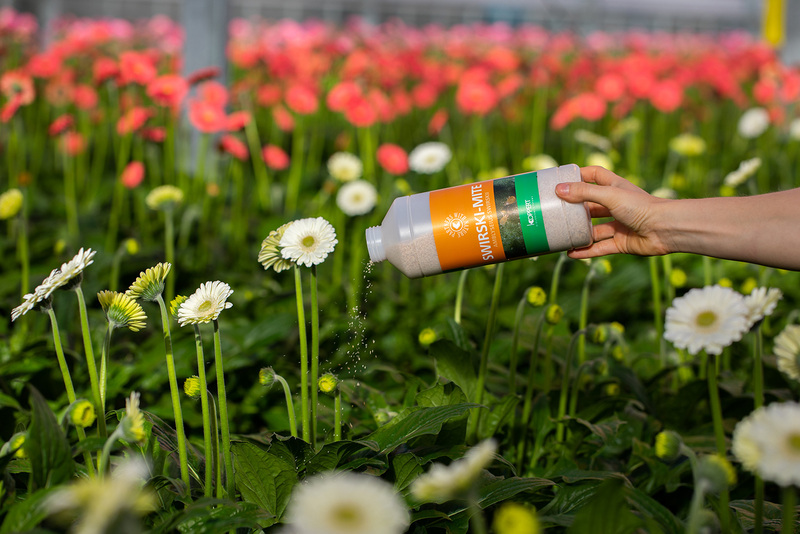Swirski-Mite Helps You Stay in Control
If you decide to use Swirski-Mite to combat thrips and whitefly, it's important to ensure that the Amblyseius swirskii predatory mites can do their job optimally. Only then will you be guaranteed an optimum result.
Do's
- If you can, apply Swirski-Mite as soon as it arrives at your company, preferably on the same day.
- If you can't, store the product in a cool (10-15 °C), dry place for no more than one to two days.
- Use the swirskii predatory mites at the right time when the population size is still low. In principle, predatory mites work preventatively.
- Monitor the infestation level using sticky traps.
- Release new predatory mites in time to keep the pest under control. If pollen is present, this can be done later than with flowers without pollen. Use your observations as a guide.
- Customization is essential – choose the right product for the right situation. This means Swirski-Mite in bottles when fast action is needed or predatory mites in breeding bags for prevention and a long-term approach.
- Keep track of the effects, and learn as you go. Learn about the biology of pests and their natural enemies. That way, you can create your own system that suits your company.

Don'ts
- Keeping the product in bright sunlight is disastrous for predatory mites.
- You also shouldn't store the mites at too low temperatures, as this can affect their vitality and fitness.
- Don't use any chemical products that kill or paralyze predatory mites.
- Make good agreements with your plant nursery. They mustn't use products with long-lasting effects.
- Not all natural enemies get along equally well: some eat each other. Choose the combination of predatory mites with care.
- Don't use natural plant protection products without careful consideration. They, too, can occasionally have a negative impact on the vitality of the predatory mites as a side effect.